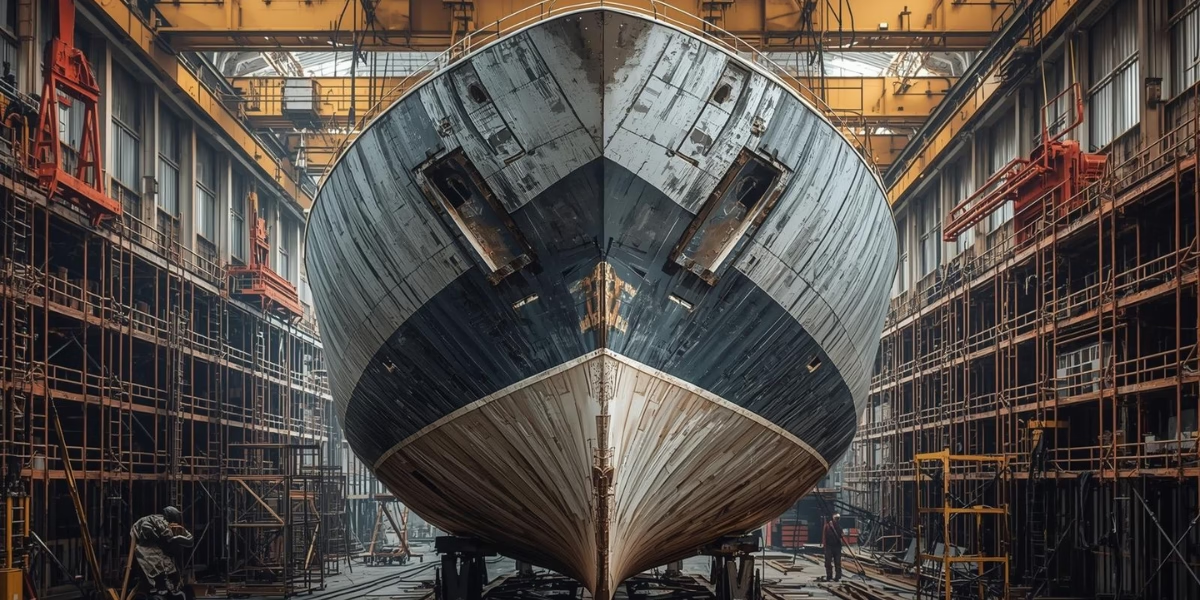Discover how composite resins in marine sector are affecting it positively. Explore current challenges and latest innovations that improve performance in harsh sea environments.
Introduction to Composite Resins in Marine Use
Composite resins are revolutionizing the marine industry. These materials combine a polymer matrix with reinforcing fibers. Together, they create lightweight yet durable structures. Over the past few decades, their use in marine applications has grown rapidly.
Boats, ships, offshore platforms, and even submarines now rely on composite resins. Their resistance to corrosion, low weight, and design flexibility make them ideal. But challenges remain. Innovations are steadily overcoming these barriers, pushing the material’s potential even further.
Why Composite Resins Work in Marine Environments
Marine environments are quite challenging. Saltwater, UV exposure, and extreme pressures test all materials. Composite resins offer key advantages in these conditions:
- Corrosion resistance: Unlike metals, resins do not rust.
- Weight reduction: Lighter vessels reduce fuel costs and increase speed.
- Design freedom: Molding resins into complex shapes is easier.
- Maintenance: Long life with minimal upkeep.
Thanks to these benefits, composite resins outperform many traditional materials. Fiberglass-reinforced plastics (FRPs), for example, have replaced steel in many small and mid-sized vessels.
Key Challenges of Using Composite Resins in Marine Applications
Despite their benefits, composite resins face several technical challenges in marine use:
Water Absorption and Hydrolysis
Prolonged water exposure can lead to resin degradation. Some resins absorb moisture, which weakens structural integrity over time. This problem becomes worse in hot or acidic water conditions.
UV Degradation
Sunlight breaks down the polymer matrix in composite resins. Over time, this causes surface cracks and fading. Protective coatings can delay this process but add cost and complexity.
Delamination and Fatigue
Composite layers may separate (delaminate) under cyclic loading. Marine structures face continuous wave action and vibration. These repetitive stresses shorten resin lifespan.
Repair and Recycling
Repairing composite resins is not as simple as fixing metal parts. Recycling is also a major issue. Most marine-grade composites are thermosets, which are hard to reshape after curing.
Innovations Driving Composite Resins Technology Forward
To address these issues, researchers and manufacturers are pushing the boundaries of material science. Here are some of the key innovations:
Nanotechnology Integration
Nanoparticles like graphene and carbon nanotubes are being added to resins. These improve strength, reduce water absorption, and increase UV resistance. Nano-reinforced resins also extend fatigue life.
Bio-Based Composite Resins
Sustainability is a rising concern in marine industries. New bio-resins made from renewable sources like soybean oil or lignin are emerging. These reduce the environmental impact and open doors to greener manufacturing.
Self-Healing Resins
Some composite resins now include microcapsules filled with healing agents. When cracks occur, the capsules break and release resin to fill the gaps. This improves durability and reduces maintenance.
3D Printing of Composite Structures
Additive manufacturing allows precise control over resin distribution and fiber orientation. 3D printing is opening up new design possibilities in custom marine parts, especially for unmanned or lightweight vessels.
Smart Composites
Sensors embedded within composite resins now allow real-time monitoring. These smart materials can detect stress, moisture levels, and even impact damage. This improves safety and helps schedule timely maintenance.
Applications of Composite Resins in Marine Sectors
From leisure boating to offshore wind farms, composite resins are everywhere in the marine world:
- Hull construction: Fiberglass and carbon fiber composites dominate in small to mid-sized craft.
- Propellers and rudders: Resin-based composites reduce weight and improve fuel efficiency.
- Offshore structures: Oil rigs and wind turbine platforms use resins for weather resistance and reduced maintenance.
- Interior panels and fixtures: Lightweight and moldable composites enhance both safety and aesthetics.
The Future of Composite Resins in Marine Industries
Looking ahead, composite resins are set to play an even larger role. Climate change, rising fuel costs, and sustainability goals all push for lighter, stronger, and greener materials.
Hybrid composites combining different fibers or resins are in development. These could offer tailored performance for specific marine needs. Additionally, more collaboration between material scientists, naval architects, and engineers will help overcome current limits.
Governments and environmental agencies are also driving demand for eco-friendly solutions. With continued innovation, the marine industry is likely to rely more on composite resins for future growth.
Concluding Thoughts:
Composite resins have transformed marine engineering. Their lightweight, corrosion-resistant properties make them invaluable. Still, challenges like degradation and recyclability remain.
Through nanotech, bio-based resins, and smart materials, the industry is finding ways to overcome these barriers. With innovation on the rise, composite resins will continue to shape the future of marine applications.
COMPANY INFO
Website: www.crestresins.com
Phone: +91 9879233188
Email: enquiry@crestresins.com
Address: 605/A, 6th Floor, Tower D, Times Square Grand Office, Sindhubhavan Marg, Near Taj Hotel, Ahmedabad, Gujarat - 380059

